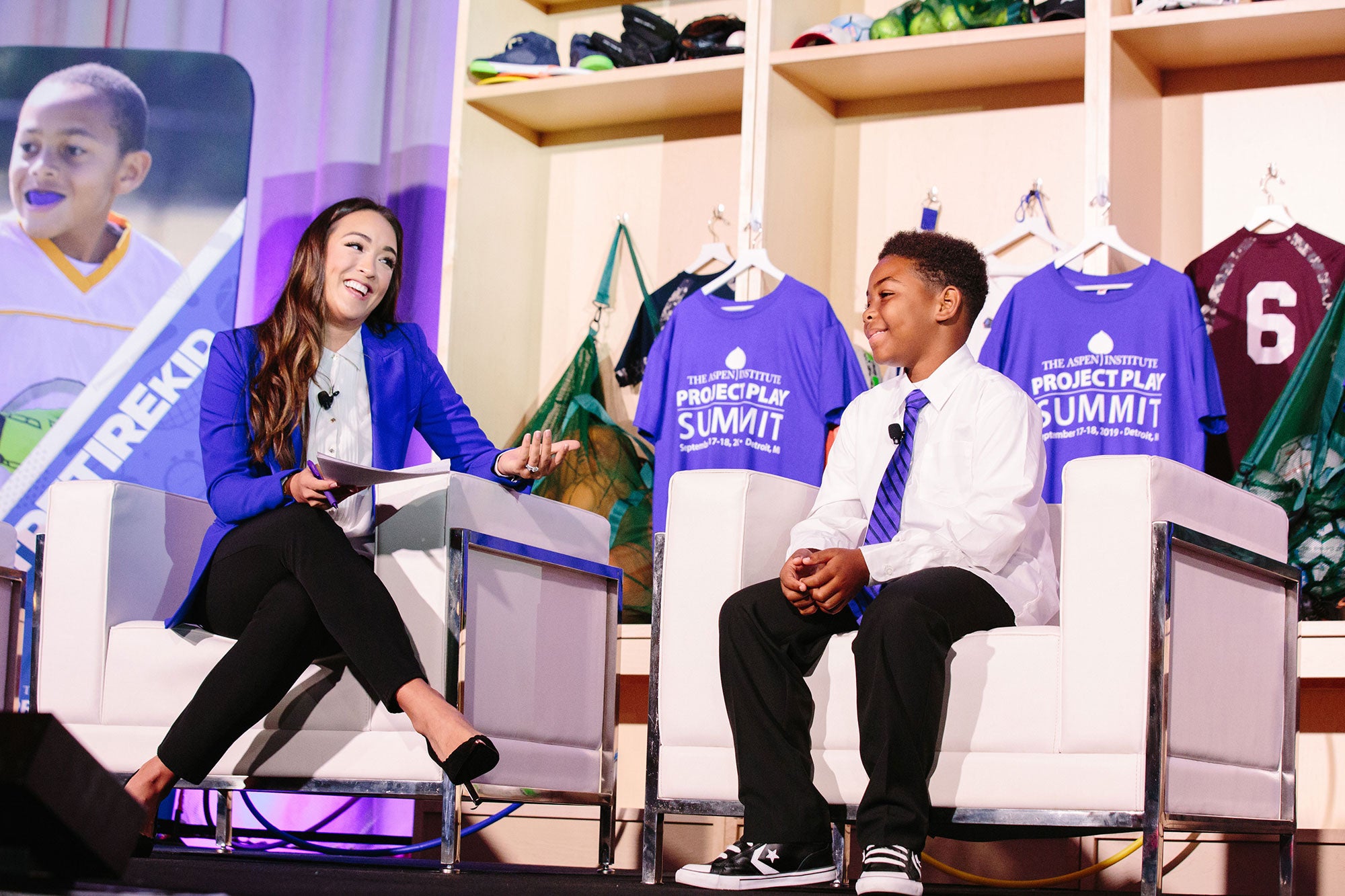Meeting the Moment
Scaling Impact
Giving Thanks
2019 Annual Report
- Statement of Financial Position (unaudited)
- Statement of Financial Position - Assets
- Statement of Financial Position – Liabilities
- Statement of Activities (Unaudited)
- Statement of Activities – Operating Expenses
- Statement of Activities - Operating Revenue
- Net Assets by Restriction
- Assset, Liability, and Net Assets in Totality 2019 vs 2018
- Revenue by Category: 2019 vs. 2018
- Expenses by Category: 2019 vs. 2018
Sporting Chances
When the pandemic began, the Sports & Society Program's Project Play initiative immediately changed its game. The program needed to help its audience understand both how Covid-19 would affect youth sports and what the long-term challenges and opportunities would be. So the team created a Covid-19 youth sports resource page.
The Sports & Society Program also began writing multiple original reported stories each week on current trends in youth sports, like the financial burden on the organizations and people who provide youth sports, the emotional and mental risks for kids who can no longer turn to sports (especially those from low-income communities), the return-to-play guidelines that may limit the experience, and the tension between reopening for business versus safety. Our new content attracted record-setting traffic to the Project Play website.
The initiative also hosted biweekly webinars on various Covid-19 youth sports topics. As of late June, Project Play had hosted seven webinars with medical experts from Johns Hopkins Medicine and the Centers for Disease Control and Prevention, the chief medical officer of the US Olympic and Paralympic Committee, former professional soccer player Taylor Twellman, former pro baseball player Omar Vizquel, and the voices of youth athletes. Each of the seven webinars attracted larger audiences than any other previous Project Play event, online or in person, since its inception in 2013: webinar attendance ranged from about 700 to over 3,000 attendees per session. This allowed the project to significantly increase its email list and communicate its work to a larger audience. To capitalize on that growth, the group also shifted from monthly to weekly newsletters in order to provide more timely information.

Next, Sports & Society partnered with the Institute’s Health, Medicine and Society Program to release the Return to Play risk assessment tool, which allows users to learn the high, medium, and low Covid-19 risks for more than 25 sports and physical activities. The team also adapted its Calls for Coaches tip sheets for remote engagement, so coaches could still provide social and emotional support to their players when they need it most.
Indoors or out, youth need sports. Sports & Society worked fast to make sure people could find ways to get them where they need them.